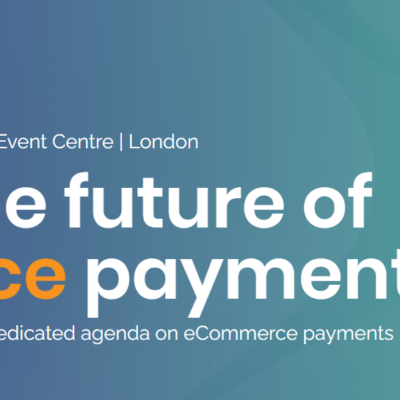The global economy will soon be dominated by Millennial and Gen Z consumers, with the two groups set to make up 72% of the world’s workforce by 2029.
These are two generations with different, more demanding ideas about how and where they want to shop, meaning the current transition towards eCommerce and away from its traditional high street counterpart will ramp up and evolve further. You only need to look to brands such as Gucci and Dyson to see shopping in the Metaverse is already becoming a reality. These, and other global brands are experimenting with immersive experiences using gamification, virtual reality and augmented reality, truly changing the face of shopping as we know it.
Seismic changes to consumer credit in the UK
Like the retail sector as a whole, the face of consumer credit is currently undergoing big changes.
These point towards modern shoppers not only embracing interest free credit and Buy Now Pay Later (BNPL) solutions, but in many cases demanding it. Solutions like these allow consumers to leverage enhanced buying power by having the ability to pay less up front for larger purchases, but it’s not something that online retail merchants should fear. Usage of these services has increased exponentially across many consumer groups over the past few years, with its user base rising 85% in less than 18 months. It’s an exciting opportunity – and the payment industry’s hottest trend.
With this solution, moving away from the traditional credit card model, the modern consumer is given convenience and flexibility, allowing them to manage their finances more closely than ever. It’s certainly not about people spending money when they don’t need to – it’s helping them get products they want and need with a payment plan best suited to their financial situation.
But to what extent are options such as interest free credit being taken up, and is it solely a trend being embraced by younger generations? Below, we look at the changing face of consumer credit among Gen X, Millennial and Gen Z shoppers.
Are Gen X embracing alternative ways to pay?
Gen X, those born between 1965 and 1980 so in their 40s and 50s, are for many retailers now the most important market.
The reason for that is simple: having accumulated savings or possibly inherited money from relatives passing away, this is the generation with the most expendable income. However, according to consumer insights from Reapit, they are not always the most forthcoming with their spending, and are known as being self-sufficient, resourceful and individualistic. According to Reapit’s Consumer Revolution report, they “tend to be cautious and deliberate when making choices, and when it comes to high value decisions are not likely to make serious mistakes”.
That doesn’t stop them from embracing new payment methods, however. It’s easy to assume the explosive growth of alternative ways to pay is solely down to young people, but that’s not the case. Instead, it’s also being embraced by the older generations – albeit in slightly more modest numbers. According to our own figures, payment solutions like ours are used by around one in three Gen X shoppers, and nearly one in five baby boomers (the generation aged from their late 50s to late 60s).
We’ve found that solutions like interest free credit are offering new opportunities to retailers across many sectors, including home improvement, which often has much higher average order values. That means demographics with high-income professionals are looking for interest free credit in high-value markets. Research from 365 Retail found Gen Xers are more likely to use services like these for tech, while baby boomers prefer to pay later for homeware equipment.
How are Millennials shopping?
As expected, millennials, referring generally to people born between 1981 and 1996, are one generation embracing the BNPL and interest free credit space in their droves. In terms of millennial shopping trends, even before the pandemic, it was estimated that over 60% were already using services like this.
Analysis from Kearney, published on Credit Connect, revealed Millennials’ growing appetite for the service. It showed that young shoppers (also including Gen Z’ers) are increasingly using it to choose which eCommerce sites to shop from, with nearly 40% saying that for purchases of £250 or more, they would prefer a flexible finance option like no-interest credit. They are looking for an easy to use, transparent service that practises responsible lending, something that can be offered with DivideBuy’s interest free credit offering. As per the report, consumers will go elsewhere if there isn’t enough flexibility and choice of payment method at check out, meaning retailers who understand this are sure to feel the benefits.
As Sameer Pethe, Principal at Kearney said, “this trend will become more significant as the market for these services continues to grow”.
Consumer credit and shopping for Gen Z – a ‘significant shift’
According to a survey by Student Beans published on This Is Money, 42% of Gen Zers – the youngest generation born from 1997 onwards – used a BNPL provider in 2021, with almost the same number saying services like this are “great at helping them afford the items they want to buy the most”.
That wasn’t restricted to a particular type of item either. Instead, it was across multiple sectors – from fashion to tech to health and beauty, showing this generation embracing the flexibility and convenience of interest free credit, allowing them to manage their finances more closely than ever. At DivideBuy, we hear a lot from clothing retailers that younger consumers like to try items in two or three sizes. Credit allows them to do this affordably rather than paying for two or three items up front.
What’s more, recent research from Auriemma Group revealed that people aged 18-34 – incorporating both Millenials and Gen Z – prefer to use an interest free credit or BNPL service than their existing credit card if faced with the need to borrow. The group’s research revealed a “significant shift” in borrowing preferences, with 20% of those already with credit cards actually preferring to use an alternative finance provider, while the percentage of cardholders choosing to borrow on their current credit card saw a 17% decrease.
Jaclyn Holmes, director of research at Auriemma Group, said she expects BNPL to continue to grow in popularity for the younger generations as well as credit card instalment plans, just like has happened in the US.
How DivideBuy can help your business embrace change
At DivideBuy, we offer interest-free credit solutions to retailers to help their businesses grow, meaning they can cater to these huge changes and attract more shoppers from all demographics.
As a business that takes its role as a responsible lender incredibly seriously, we work in partnership with retailers across the UK to offer their customers more choice and convenience, ultimately driving conversions, reducing cart abandonment and boosting profits. Simba Sleep, for example, saw customer conversions increase by 25% after implementing DivideBuy’s POS finance options.
If you’re interested in implementing DivideBuy as your POS finance provider, book a demo today.




 Tweet
Tweet
 Facebook
Facebook


















